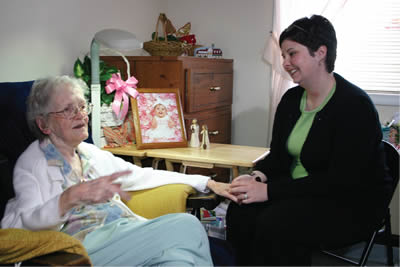Southeast Texas Home Health Guide to Wound Care and Diabetes Management for SETX Seniors
No matter how small or superficial a wound is, you should not ignore it if you have diabetes.
If you get a blister from tight cowboy boots or nick your chin while shaving before church, you probably wouldn’t normally give it much thought.
It is important to know that if you have diabetes, any of these simple examples could severely worsen and you should seek proper treatment.
Knowing how to treat minor wounds will help you avoid infection and speed healing.
Why Diabetic Wounds Can Cause Problems
Diabetes is a chronic disease. Essentially, your body can no longer use glucose, or sugar, the way it did before. Diabetes can cause a number of complications, including making it harder for wounds to heal.
These include:
- Nerve damage (neuropathy). When you have neuropathy, you may not feel the pain of a cut or blister until it has already become infected.
- Weakened immune system. When your body’s natural defenses are down, even what would have once been an insignificant wound may become infected.
- Narrow arteries. People with clogged arteries in their legs are more likely to develop wounds, have severe wound infections, and have problems healing. Narrowed arteries makes it harder for blood to get to the wound. Blood flow promotes healing, so anything that blocks it can make wounds more likely to become infected.
How to Treat a Diabetic Wound
If you have a wound, no matter how small, take the following steps to avoid infection and promote healing.Your Southeast Texas home care nurse can be a huge help:
- Take care of the wound immediately. Even a minor wound can become infected if bacteria are allowed to build up after injury.
- Clean the wound. Rinse the wound under running water to remove dirt. Don’t use soap, hydrogen peroxide, or iodine, which can irritate the injury. Then apply antibiotic ointment to prevent infection, and cover the wound with a sterile bandage. Change the bandage daily, and use soap to clean the skin around the wound. Inspect your wound daily for any signs of infection.
- See your doctor or home health care practitioner. Don’t take any chances. Have even minor skin problems checked right away before they turn into more serious problems.
- Keep pressure off the wound as it heals. For example, if your wound is on the bottom of your foot which can be a common area for diabetic patients to develop calluses and blisters, stay off it as much as possible so it will have a better chance to heal.
If you are under SETX Home Health Care, your issues can be somewhat lessened. These wounds can be checked and monitored by your Southeast Texas Home Health nurse who can assist you with treatment or with escalating the situation to your physician.
If you have additional questions about how Southeast Texas Home Health can assist with diabetic wound care and diabetes management, call Harbor Home Health:





















